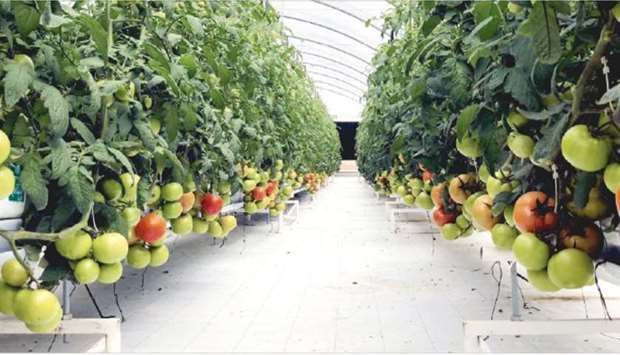Qatar has witnessed a robust month-on-month expansion in the use of treated wastewater in the irrigation of green spaces in March 2021, according to the Planning and Statistics Authority (PSA).
Qatar’s treated wastewater stood at 21.42mn cubic metres out of 21.43mn cubic metre of wastewater received in March this year, the PSA said. The treated wastewater saw an 11.5% growth month-on-month but witnessed 11.3% decline year-on-year in the review period.
The treated wastewater reused for irrigation of green spaces witnessed a 28.5% month-on-month growth to 7.78mn cubic metres, which accounted for more than 36% of the total treated wastewater compared to 31% the previous month. On yearly, the reuse of treated wastewater for irrigation of green spaces saw a 44.6% increase in March 2021.
Qatar Environment and Energy Research Institute, part of Hamad Bin Khalifa University recently developed a seawater desalination pilot plant which is showing higher efficiency than conventional technology – both in energy recovery to reduce thermal energy consumption, and cost effectiveness.
The agriculture sector has been receiving increased thrust and support of the sovereign as part of the self-sustaining initiatives. The treated wastewater reused in agriculture amounted to 5.77mn cubic metres, which accounted for 27% of the total treated wastewater this March (against 30% in February 2021).
The reuse of treated wastewater in the agriculture sector witnessed a 0.8% monthly increase but saw a 21.3% plunge on yearly basis in the review period.
Mahaseel for Marketing and Agri Services Company (a subsidiary of Hassad) has marketed 10mn kg of locally produced vegetables in the domestic market since January 2021. “The local farms have helped increase the self-sufficiency rate of Qatar in agricultural production to 33%, doubling the production compared to three years ago,” Director of the Food Security Department, Masoud Jarallah al-Marri, said recently. The re-use of treated wastewater for agriculture hints at the hydrocarbons-rich country’s Green initiatives, a key parameter of sustainable development.
The treated wastewater reused in deep injection into aquifers stood at 6.49mn cubic metres, registering 6.7% jump month-on-month in March 2021. On a yearly basis, it shrank 12.4%. Such reuse accounted for more than 30% of the total treated wastewater against about 32% the previous year period.
The treated wastewater discharged into lagoons in March this year stood at 1.32mn cubic metres or more than 6% of the total treated wastewater re-used compared to more than 7% in February 2021. Such discharge saw a 3.7% and 67.6% contraction on a monthly and yearly basis respectively.
The discharge of treated wastewater into the sea stood at 50,000 cubic metres in March 2021.
The PSA bulletin said the water produced was 51.59mn cubic metres; while consumption was 50.72mn cubic metres in the review period.
Business / Business
Qatar’s reuse of treated wastewater for irrigation of green spaces sees 44.6% increase in March

Qatar has witnessed a robust month-on-month expansion in the use of treated wastewater in the irrigation of green spaces in March 2021, according to the Planning and Statistics Authority
